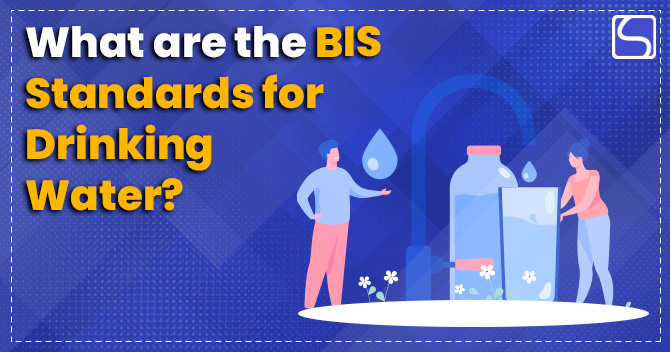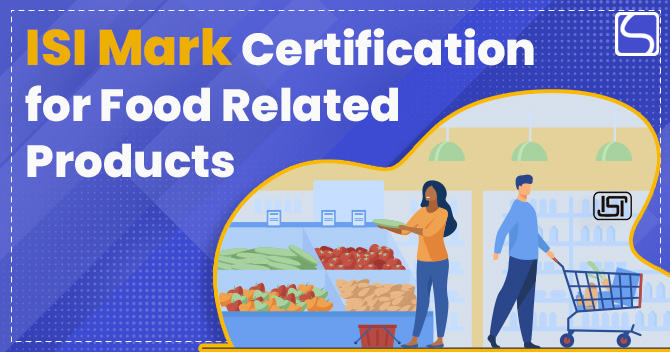What are the BIS Standards for Drinking Water?

Priyanka Bajpayee | Updated: Jun 20, 2022 | Category: BIS
Every citizen has the right to get clean, safe drinking water. Unfortunately, the natural resource that sustains life on Earth is now dangerously contaminated. As per NSO reports, nearly two-thirds of Indian households drink untreated and unsafe water. Only 8% boil water before drinking which is not an efficient method of removing contaminants. According to the Sustainable Development Goals, every country must reach this goal by 2030. The Bureau of Indian Standard has developed guidelines to ensure safe drinking water. In this blog, we will pen down the BIS Standards for Drinking Water.
Table of Contents
Overview-BIS standards for drinking water
The Bureau of Indian Standards (BIS) has established IS 10500: 2012 as the Indian standard for drinking water quality. In 1983, the Indian drinking water standard was published by the Bureau of Indian Standards (Drinking Water Specification). The standard has been subject to few revisions since then, with the most recent in 2012.
The 2012 revision was made to improve the standards and align them with international drinking water specifications. Revisions also considered the most recent information on the nature and concentration of contaminants.
To ensure quality water and protect against pathogens, routine testing, and analysis of drinking waters supplied by Jal Boards or other water supply agencies. The water quality and frequency determine it. Water must be tested for impurities and changes in taste or colour. While it is necessary to take safeguards to control contamination of drinking water,
testing must also be undertaken for chlorine-resistant parasites that can get into water like cryptosporidium species and giardia.
In an ideal situation, all samples of water taken from the water distribution system, including consumers’ premises, should be free from coliform and other biological organisms, and bacteriological quality must be as per BIS standards. The biological examination is also useful when determining the cause of unpleasant tastes or odors in water. To be safe for drinking, cooking, and food processing, water must not contain microscopic organisms like algae, flagellates, and flagellates.
Revised Specification- BIS Standards for Drinking Water
BIS standards 2012 has revised the specifications to include virological requirements. BIS has made one of its most significant changes, adding virological requirements to the 2012 revised standards. MS2 Phage is an indicator of viral contamination in drinking waters. To make water safe for consumption, MS2 Phage must be absent from 1 liter of water. This standard clearly states that samples from distribution systems, including those taken from consumer premises, must be free of viruses.
Nature and Significance of BIS Standards for Drinking water
Following is the nature & significance of BIS Standards for Drinking Water[1]:
Voluntary in Nature: BIS quality standards are not mandatory for civic agencies engaged in supplying drinking water to houses across the country.
Significance: Under Jal Jeevan Mission, as per existing guidelines, IS 10500:2012 is to be adopted to ensure a safe drinking water supply.
States/ UTs have been advised to test drinking water sources once a year for chemical and physical parameters and twice a year for bacteriological parameters.
BIS Standards for drinking water quality –
The Central Ground Water Board states that BIS (IS_10500, revised module IS 10500-2012) contains Uniform Drinking Water Quality Monitoring Protocol specifications. The standard is limited to two levels:
● Acceptable limits and
● Permissible limits
The BIS will declare water unfit to drink if it is bacteriology degraded (E-coli and viruses etc.) or if chemical contamination exceeds maximum permissible limits.
According to BIS 1500-2012, the adequate limit of bacteria & other major contamination are as follows:
| Test parameter | Satisfactory limit | Permissible limit (In the lack of an alternate source of water) |
| pH value | 6.5-8.5 | No relaxation |
| Turbidity | 1 | 5 |
| Overall hardness as CaCo3, mg/l, Max | 200 | 600 |
| E.coli presence or absence | Shall not be noticeable in any 100ml sample | Shall not be noticeable in any 100ml sample |
| Total iron as Fe, mg/l, Max | 0.3 | No relaxation |
| Taste | Agreeable | Agreeable |
| smell | Agreeable | Agreeable |
| Chloride (Cl), mg/l, Max | 250 | 1000 |
| Calcium (Ca), mg/l, max | 75 | 200 |
| Residual Free Chlorine (Cl), mg/l, Min | 0.2 | 1 |
Drinking Quality Criteria
| Specified Best Use | Class of Water | Criteria |
| Drinking water source without any traditional treatment but after disinfection | A | Total Coliforms Organism MPN or 100 MIL will be 50/less Ph between 6.5 and 8.5 Dissolved oxygen 6mg/I or more Biochemical Oxygen Demand 5 days 20 Celcius 2mg/l or less |
| Outdoor Bathing | B | Total Coliforms Organism MPN or 100 MIL SHALL BE 500 or less Ph between 6.5 and 8.5 Dissolved oxygen 5mg/I or more Biochemical Oxygen Demand 5 days 20 degree Celcius 3mg/l or less |
| Drinking water source after conventional Treatment & disinfection | C | Total Coliforms Organism MPN or 100 MIL SHALL BE 5000 or less Ph between 6 and 9 Dissolved oxygen 4mg/I or more Biochemical Oxygen Need 5 days 20 degree C 3mg/l or less |
| Propagation of Wildlife & Fisheries | D | Ph between 6.5 to 8.5 Dissolved oxygen (O2) 4mg/I or more Free ammonia (as N)12 mg/I or less |
In rural India, safe drinking water must be provided, thinking of the health risks of chemical & microbiological hazards. Water safety plans are the most suitable way to ensure safe drinking water. They effectively use water quality data to plan preventive & corrective measures.
The Government of India (GoI) has allocated 3% of the state allocation of the NRDWP (National Rural Drinking Water Program) to water quality surveillance & monitoring. Remove old information. This protocol is a guideline on the minimum infrastructure required or needed for building space, workforce, & instrumentation. This will address the critical need for laboratories to be strengthened & established to guarantee drinking water quality.
Bacteriological limits (BIS Standards for Drinking water)
Requisitioned coliform count in water entering the distribution system-
- It shall not be noticeable for a provided 100 ml sample.
- For water present in a distribution system:
- E Coli count in 100 ml of any sample = Zero.
- Coliform organisms per 100 ml in any sample = 10
- Coliform organisms should be zero in 100 ml of any two repeated samples.
- The same shall apply to 5% of the water samples collected for the year.
Conclusion These requirements ensure water is free of any residues, microorganisms, or other substances that could be harmful to humans.
All BIS certification requirements can be met by us as a single source. In an ideal situation, all water samples taken from the water distribution system should be free from coliform, and other biological organisms, and bacteriological quality must be as per BIS standards.
Read our Article:How to Get BIS Registration Certificate in India?














